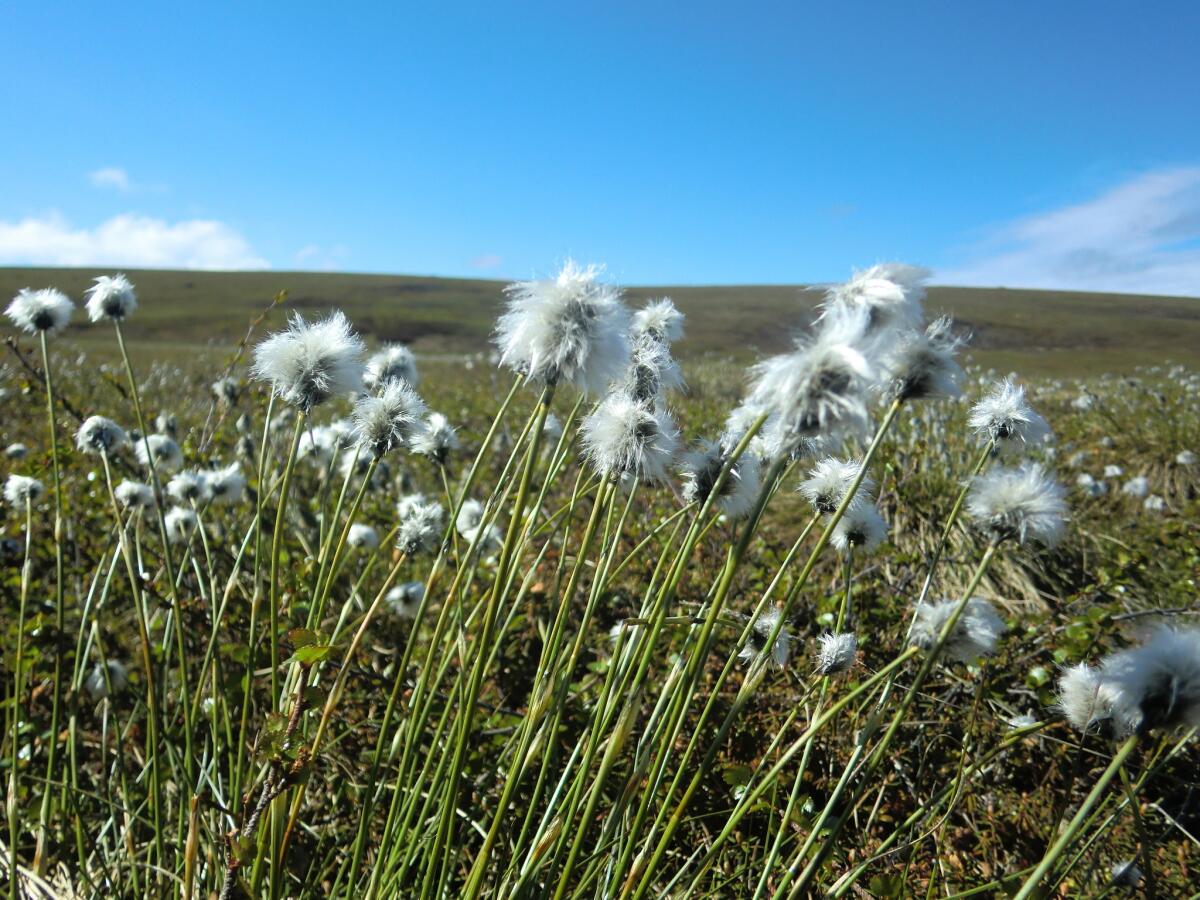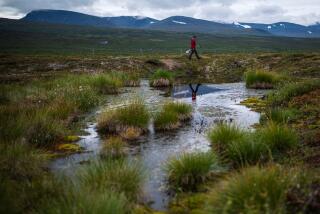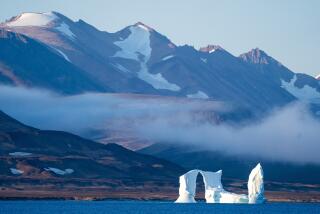Opinion: What global warming looks like up close

- Share via
Reporting from Arctic Alaska — The growing season in Arctic Alaska is short. One month, the ice and snow are barely showing signs of melting. The next month, migratory birds arrive to build nests in the greening tundra. Their time for mating, laying eggs and sending fledglings off on their own is short; think of it as avian speed dating.
There’s a certain frantic energy to the science in the Arctic as well. Come May, researchers from around the country start arriving at Toolik Field Station, a motley collection of modular units and tents on a gravel pad about 120 miles south of the Beaufort Sea. They bring their own version of their young: graduate students, post-docs, research associates who will probe the permafrost, count the bird nests, measure the plants for clues to what climate change might bring us.
The hours are long — why not, when the sun never even brushes the horizon at this time of year. And it’s not a comfortable place to live. Showers are allowed twice a week, and for two minutes at a time. Sleeping quarters are in Weatherports — large, raised tents shaped like Conestoga wagons.
But the researchers feel lucky to have a berth here. I do too, visiting for a week thanks to a fellowship from the Marine Biological Laboratory in Woods Hole. The Arctic is ground zero for climate change research because the effects of warming were seen first this far north, and continue to be experienced here most dramatically.
It’s all about light and darkness, as one of the scientists explained it to me. The white ice that once reflected the sun’s rays began to melt; the darker waters and greenery underneath absorbed light rather than reflecting it, accelerating the change. So researchers are examining the changes, or even giving those changes a prod, to find out more about what the world might expect from global warming.
The answers aren’t easy. There are ecological winners and losers. Large shrubs (large being a relative term in the tundra) grow larger, blocking shorter plants from the sun. The thawing of permafrost — the layer of consistently frozen soil just inches beneath the surface — threatens to release yet more carbon, which has been locked within for thousands of years. At the same time, it’s likely to release more phosphorous and other plant nutrients into the rivers; experiments show that this might increase the growth of algae and allow fish to grow larger. Will increased growth recapture all or most of the carbon being released by permafrost? The answer isn’t clear, but things don’t look promising.
Another project looks at what might happen to migratory birds that nest in the tundra. They time their migration by the sun, not by the weather. But the insects they depend on hatch according to the weather. A longer growing season might mean the insects are past their heyday by the time the birds need them. Would that mean sicklier birds and loss of species? One of the two birds under study, the Gambel’s white-crowned sparrow, winters in Southern California.
The irony of Toolik, which is seldom lost on those who work here, is that their work— indeed the camp’s very existence — has been made possible by the world’s thirst for oil, one of the fossil fuels feeding global warming. The road put in place for the trucks serving the trans-Alaska pipeline is the only way to get from Fairbanks to here. The pipeline itself is a constant, very visible presence between the research station and the snow-covered peaks of the Brooks Range.
And some of the scientists note wryly that they took planes to get to Fairbanks, the nearest city, and trucks to drive the nearly 400 miles from Fairbanks to Toolik.
The answers to climate change aren’t easy, especially in the Arctic.
More to Read
Sign up for Essential California
The most important California stories and recommendations in your inbox every morning.
You may occasionally receive promotional content from the Los Angeles Times.














